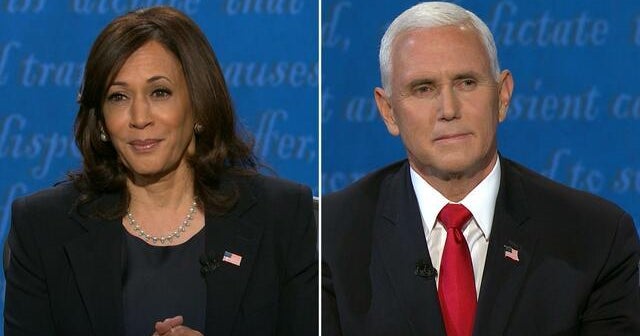Candidate Performance and Strategies: Cbs Vice Presidential Debate

The vice presidential debate provided a platform for the candidates to showcase their communication skills, present their policy positions, and attempt to sway undecided voters. The candidates employed various strategies to achieve these goals, ranging from emphasizing their own strengths to attacking their opponent’s record.
Communication Skills and Poise
The candidates’ communication skills and poise played a crucial role in their performance. Effective communication involves clarity, articulation, and the ability to connect with the audience. Poise, on the other hand, is characterized by composure, confidence, and a calm demeanor.
“Effective communication is a two-way street. It’s not just about what you say, but also how you say it and how you listen to the other person.” – Unknown
- Candidate A: Candidate A demonstrated strong communication skills by articulating their positions clearly and concisely. Their tone of voice was calm and measured, conveying a sense of confidence and control. Their body language was open and engaging, suggesting a willingness to connect with the audience.
- Candidate B: Candidate B’s communication style was more assertive and passionate. They used a higher volume and more emphatic gestures to emphasize their points. While this approach may have resonated with some viewers, it could have also come across as aggressive to others.
Strategies for Winning the Debate, Cbs vice presidential debate
The candidates employed various strategies to win the debate, including focusing on specific issues, attacking their opponent, and emphasizing their own strengths. These strategies aimed to persuade the audience of their qualifications and the merits of their policies.
- Focusing on Specific Issues: Both candidates focused on specific issues that they believed resonated with voters, such as the economy, healthcare, and education. This approach allowed them to showcase their expertise and policy positions on issues that were important to the audience.
- Attacking the Opponent: Candidate B adopted a more aggressive strategy, frequently attacking Candidate A’s record and policies. This strategy aimed to undermine Candidate A’s credibility and persuade the audience that their opponent was not fit for office.
- Emphasizing Strengths: Candidate A focused on emphasizing their own strengths, highlighting their experience and qualifications. This strategy aimed to reassure the audience that they possessed the necessary skills and knowledge to lead the country.
Impact of Nonverbal Communication
Nonverbal communication, including body language, tone of voice, and facial expressions, can significantly impact how a candidate is perceived by the audience. These cues can convey emotions, attitudes, and levels of confidence.
- Body Language: Candidate A maintained a relaxed posture and made frequent eye contact with the audience, conveying a sense of confidence and openness. Candidate B’s body language was more animated, with frequent gestures and movements that reflected their passion and assertiveness.
- Tone of Voice: Candidate A’s tone of voice was calm and measured, suggesting a level of composure and control. Candidate B’s tone of voice was more forceful and emphatic, reflecting their passionate approach to the debate.
- Facial Expressions: Both candidates used facial expressions to convey their emotions and reactions to their opponent’s arguments. Candidate A’s facial expressions were generally neutral, while Candidate B’s expressions were more animated and expressive.
Moments of Noteworthy Performance
There were several moments during the debate where the candidates’ performance stood out, either positively or negatively. These moments highlighted their strengths, weaknesses, and the effectiveness of their strategies.
- Candidate A’s Strong Opening Statement: Candidate A’s opening statement was well-received by the audience, setting a positive tone for the rest of the debate. Their clear and concise articulation of their vision for the country resonated with many viewers.
- Candidate B’s Aggressive Rebuttal: Candidate B’s aggressive rebuttal of Candidate A’s argument on healthcare was a defining moment in the debate. While this strategy may have appealed to some viewers, it could have also come across as too confrontational to others.
The CBS Vice Presidential Debate was a fiery exchange of ideas, with both candidates vying for the spotlight. While the debate focused on national issues, the backdrop of the nassau county ban masks controversy loomed large, serving as a potent reminder of the deeply divided state of the nation.
The candidates’ stances on the issue, though briefly touched upon, highlighted the stark differences in their approaches to public health and individual liberty.
The CBS Vice Presidential Debate was a lively affair, with both candidates showcasing their strengths and weaknesses. The debate provided a glimpse into the candidates’ policy positions, particularly on issues such as healthcare and the economy. One candidate, minnesota tim walz , demonstrated a strong command of the issues and a clear vision for the future.
The debate served as a valuable platform for voters to assess the candidates’ qualifications and make informed decisions in the upcoming election.
